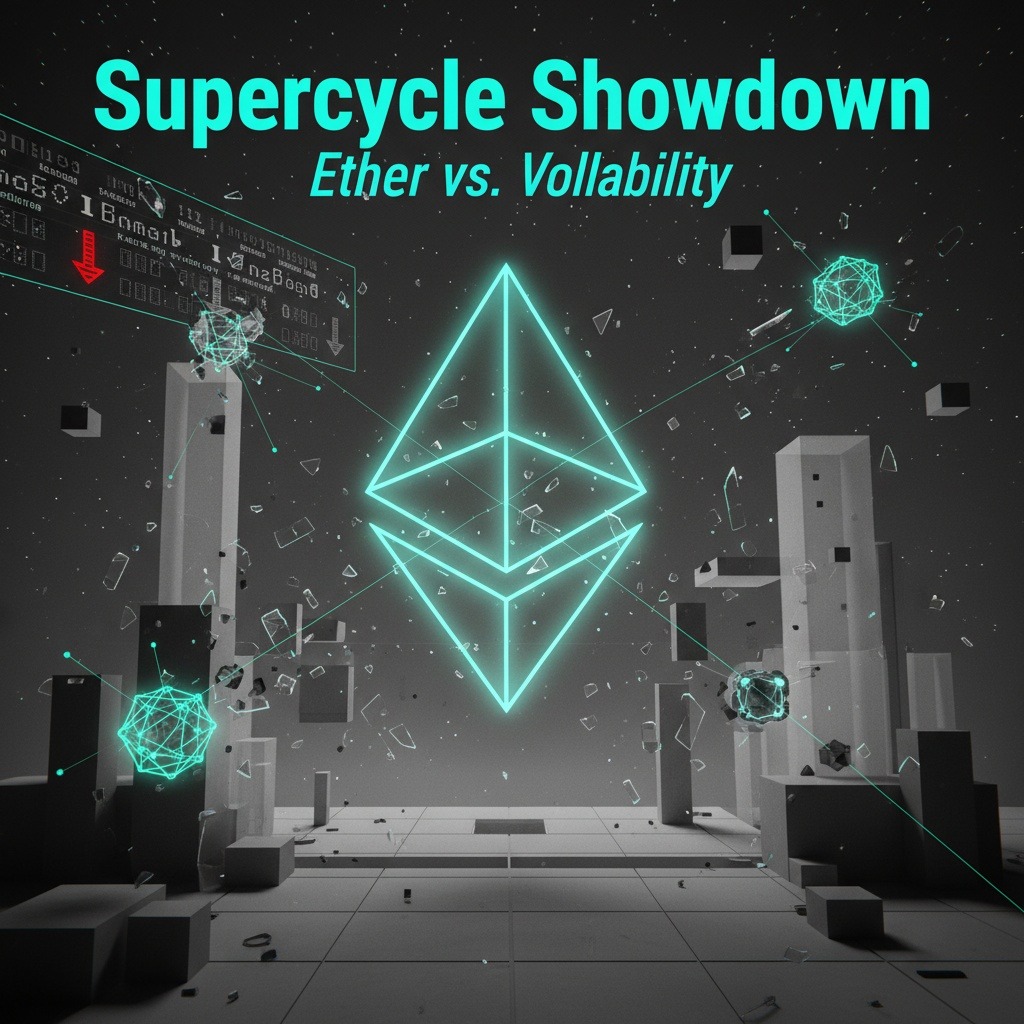This week in decentralized finance (DeFi), a spirited discussion has emerged regarding the potential for a prolonged “supercycle” within the cryptocurrency market, fueled by increasing participation from institutional investors. Proponents suggest that this might significantly alter the valuation landscape of digital assets, steering it away from the traditional four-year cycle associated with Bitcoin’s halving events.
Ethereum’s native token, Ether (ETH), which operates on the leading smart contract platform, may stand to gain considerably if institutional interest continues to escalate. BitMine, recognized as the largest corporate holder of ETH, emphasizes the notion of “Wall Street running into the blockchain” as a significant catalyst for Ether’s potential growth.
However, despite this optimistic outlook, Ether has experienced a notable downturn, declining 13% over the past week and falling below the $4,000 mark for the first time since early August, according to data from Cointelegraph.
In a broader context, the cryptocurrency market is facing unique challenges. The Hyperliquid (HYPE) token’s upcoming vesting schedule is set to release approximately $11.9 billion in HYPE tokens over the next two years, which may be a critical stress test for the token’s durability. Arthur Hayes, co-founder of BitMEX, noted that this “Sword of Damocles” situation could introduce about $500 million in monthly unlocks, with only about 17% expected to be mitigated through buybacks. This leaves a significant potential oversupply of around $410 million, raising concerns among investors.
Notably, a major whale wallet recently removed $122 million in HYPE tokens shortly after warnings of potential sell pressure were issued, underscoring the volatility present in the market.
Despite the rising discourse around a potential Ether supercycle, skepticism persists among some Wall Street analysts. Citigroup has established a conservative year-end price target for Ether at $4,300, significantly below its record high of $4,953 achieved in August. Citi’s recent analysis highlights that current prices may be unsustainable, fueled by recent buying activity and a surge in use-case excitement.
Nonetheless, Ether has seen astonishing growth over the past six months, rising approximately 108% and trading at around $4,177 at the time of writing, according to TradingView data.
In a different corner of the crypto landscape, Circle, the second-largest stablecoin issuer, is exploring the possibility of implementing reversible transactions. This initiative aims to enhance the recovery of funds lost due to fraudulent activities or hacks and raises significant philosophical questions about the core tenets of cryptocurrency, primarily the finality of transactions.
Circle’s president, Heath Tarbert, discussed the company’s considerations in an interview with the Financial Times, stating, “We are thinking through [. . .] whether or not there’s the possibility of reversibility of transactions, right, but at the same time, we want settlement finality.” This represents a complex tension between the immediate transferability of assets and the permanence that decentralized transactions are built upon.
While advocates for reversibility claim it could provide additional security for victims of scams and bolster trust in stablecoins, critics warn that it conflicts with the foundational principles of decentralized finance. This development could signify a pivotal moment in the ongoing evolution of traditional financial frameworks competing with the decentralized ethos of cryptocurrency.



